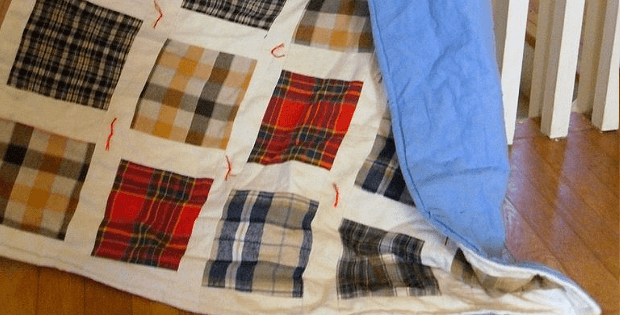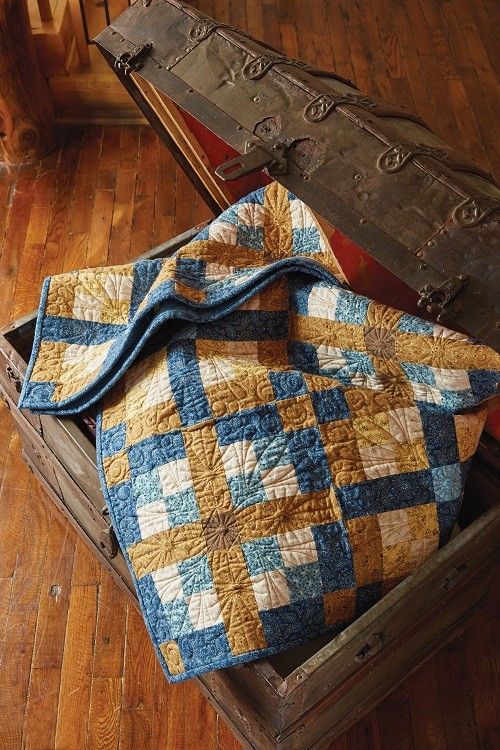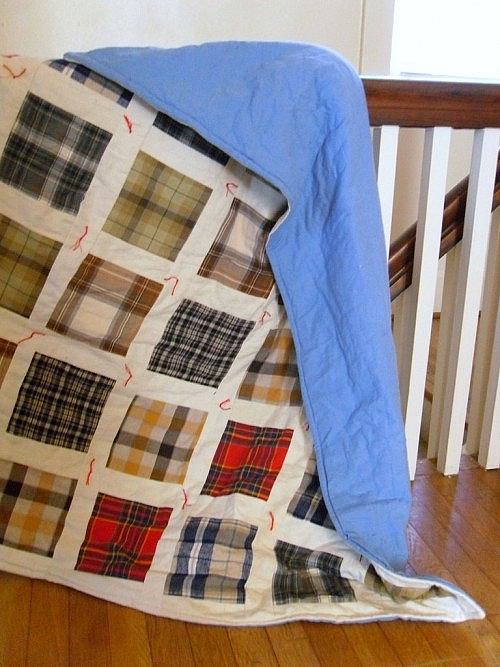Tips for Making a Cozy Flannel Quilt

Keep This List Handy When Working with Flannel!
Flannel quilts are so cozy and comforting that it’s natural for quilters to want to make one (or more!). The soft, brushed surface creates warmth and makes a quilt extra cuddly. Whether you simply want to add a flannel backing to a standard pieced top or want to piece the top with flannel as well, these tips will help the project go more easily.
Flannel fabric presents some challenges for quilt making, but nothing that can’t be overcome with a bit of care. An important point to remember is that flannel tends to be of a larger weave than cotton quilting fabric. Consequently, it shrinks and stretches more than you may be used to. Plus, flannel tends to act a bit differently depending on whether it is thin or thick.
Quilt pattern available from Quilting Daily.
We’ve compiled several tips for working with flannel, which you’ll find below. While the list may seem a bit daunting, be assured that working with flannel is not as difficult as it may seem at first glance. Read through it and focus on the basics, then refer back if you’re having a particular problem. Hopefully, you’ll find the answer you need here.
Selecting Flannel for Quilting
- High-quality flannel is going to be easier to work with than that of lesser quality. Inexpensive, thin flannel may have spots that are thinner than others, which you’ll want to avoid. This can happen with more expensive flannels, too, so check every bolt. In general, however, lush, high-quality flannel will be relatively easy to work with.
- With any bolt of flannel, unroll some of it and hold the fabric up to the light, looking for thin patches. Those areas will wear more quickly and fray more easily, so plan to cut around them.
- Good-quality flannel sheets are perfect for quilt backings and even for cutting up for piecing. Old flannel shirts can be good for piecing, too.
- Buy extra fabric to allow for shrinkage. Flannel shrinks by about 5%, while quilting cotton shrinks from 1-3%.
- The fabric width is likely to be narrower than standard quilting cotton, so take that into account as well.
Start With a Simple Quilt Pattern
- If you haven’t worked with flannel before, choose a quilt pattern with few bias edges (triangles). Flannel stretches easily, and you may want to minimize having to stitch pieces cut on the bias until you’ve had some experience working with it.
- Because it frays so easily, flannel is great for rag quilts.
The quilt pictured above, from Hasenfeffer Inc., was made from flannel shirts and sheets. You’ll find the free tutorial at the link below.
Prepping and Cutting Flannel
- Whatever flannel you choose, be sure to pre-wash it – perhaps twice. Use hot water and a hot dryer setting to encourage shrinking before you start constructing the quilt.
- It’s not advised to pre-wash pre-cut fabric. Be sure to purchase precuts and kits from reputable dealers who use high-quality fabric lines. Expect the finished quilt to shrink and crinkle more than usual.
- Spray starch the flannel before cutting to help it stay stable.
- If you’re strip piecing, cut on the long grain, parallel to the selvage. Even if you are cutting freehand, flannel will stretch a lot less on the long grain than on the shorter grain (across the width of the fabric).
- A rotary cutter is unlikely to cause stretching, so that’s a better choice than cutting with scissors.
Sewing Flannel
- Flannel stretches easily, so consider using a walking foot. Try sewing with your regular foot on a scrap, then with the walking foot. Choose whichever one gives you the best results.
- Flannel tends to grab everything, including the feed dogs. Plus, it’s thicker than quilting cottons. Check the pressure of your presser foot by sewing on some scraps, and reduce the pressure if necessary. You may find that a little less pressure will allow the fabric to feed through the machine more evenly.
- Flannel dulls needles quickly, so be prepared to change the needle often.
- Flannel also creates a lot of fuzz. Keep your little brush handy and clean often around the needle, bobbin case, and feed dogs.
- Flannel pieces positioned with right sides together will stay in place well, so you may not need as many pins. Or, you may need more pins. It depends on the flannel.
- Flannel frays easily, so use 1/2″ seams instead of 1/4″.
- If you’ve selected a flannel that frays easily, Fray Check from Dritz will help keep the edges of cut pieces from fraying while handling and sewing.
- Press the seams open.
- Because of its looser weave, flannel tends to be more delicate than quilting cotton. Be careful when ripping out seams so you don’t break any fabric threads. That can create holes in the fabric.
- A serger will prevent fraying. Whether or not you want to use that for piecing is up to you, but you might want to serge the edges of the backing before layering.
- Press with a hot iron and without steam.
Quilt pattern available from Quilting Daily.
Finishing and Storing A Flannel Quilt
- Flannel is harder to hand quilt, so it’s best for quilts that you will tie or machine quilt.
- Cotton batting is perfect for flannel quilts. If both the front and back are flannel, you may want to go with a thinner batting so the quilt sandwich isn’t overly thick.
- Store your flannel quilts with tissue paper between the folds to keep wrinkles from setting in.
Flannel quilts are so appealing, especially as cooler weather sets in. Keep these tips in mind, and you’ll soon have one of your own to snuggle in. If you have other tips to add to our list, we hope you’ll leave a comment below.
Happy quilting!
Sources:
http://amybutlerdesign.com/pdfs/Flannel_Tips.pdf
http://www.equilters.com/library/tips-hows/flannel-quilting.html
http://www.craftsy.com/blog/2015/11/sewing-with-flannel/
http://my-fabric-obsession.blogspot.com/2011/01/tips-for-quilting-with-flannel-fabric.html














